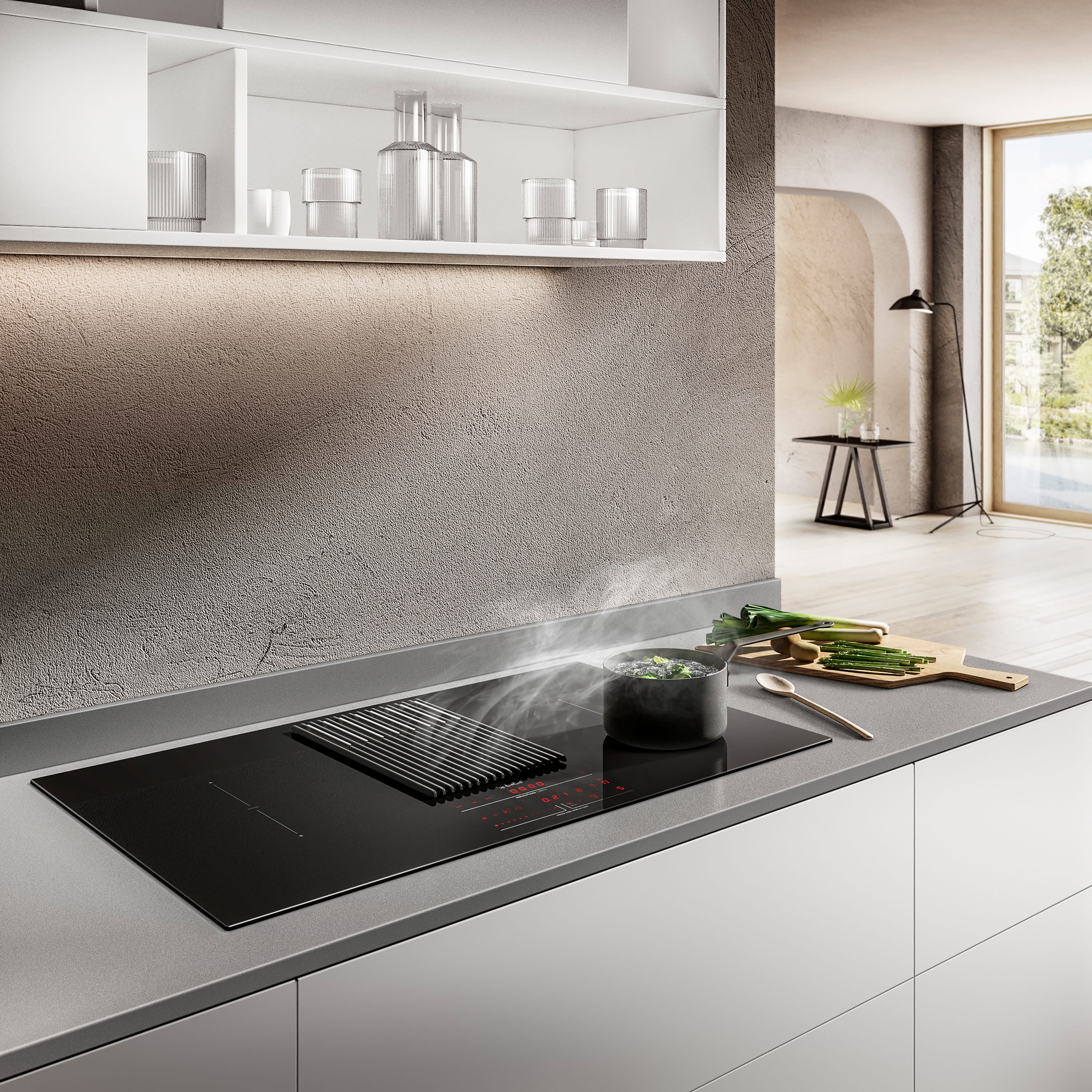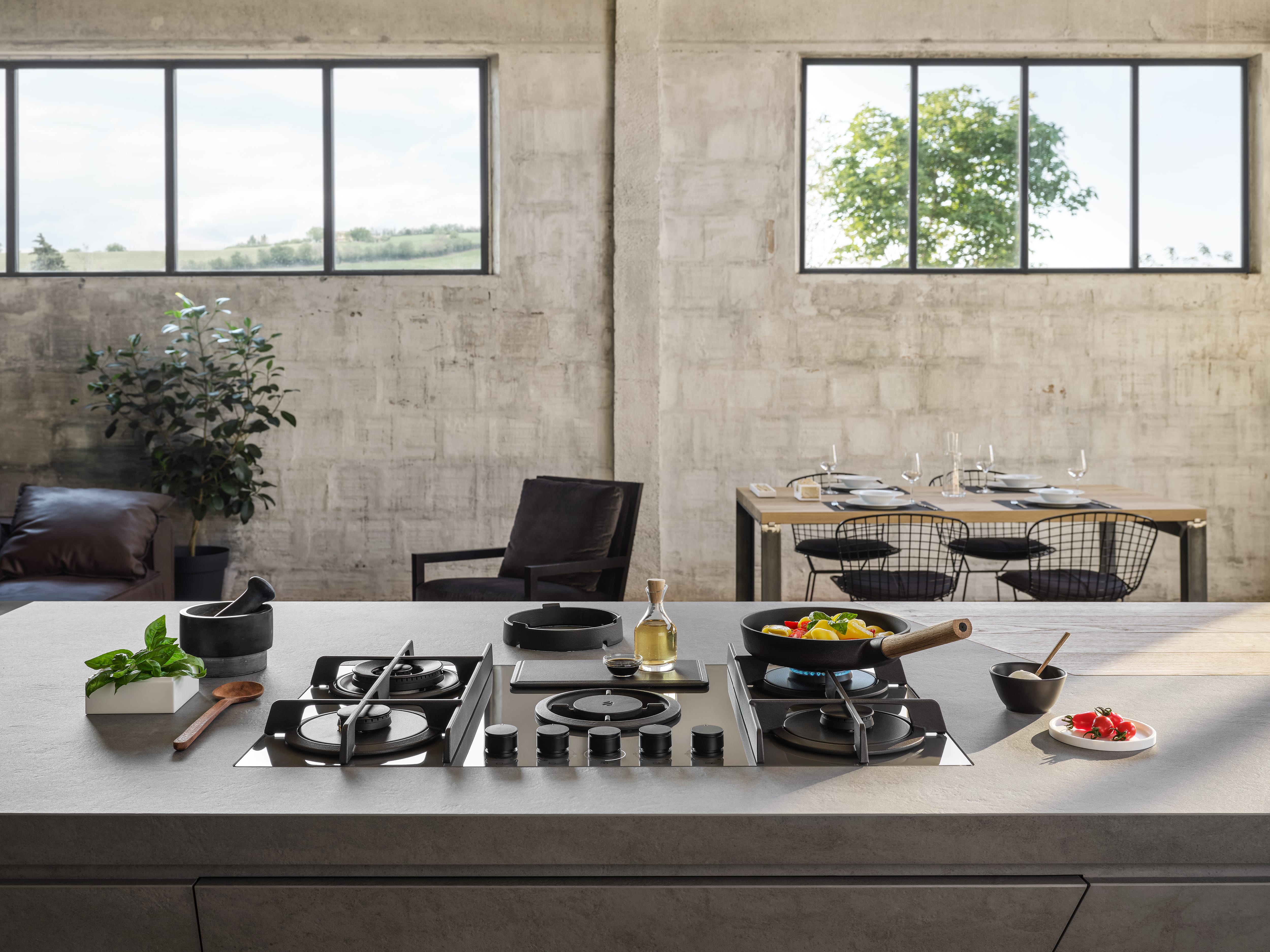
Gas and induction hobs: advantages and disadvantages
Recent years have led people closer to a 360-degree cooking experience: no longer just a necessary activity at specific times of the day but a continuous search for inspiration to cultivate one's passion. This is why kitchen appliances must offer the possibility of experimenting in many ways, to fully be in control of all cooking steps.
When choosing, a question you may ask yourself is: do gas or induction hobs offer a better experience? As a matter of fact, each of the two technologies has advantages and critical issues that must be evaluated and weighed together to make the best choice. Here are the pros and cons of induction and gas hobs, with a few tips to help you decide.
Induction hob: advantages and disadvantages
Induction hobs utilize the phenomenon of electromagnetic induction to heat food. It is a more modern technology in comparison to classic gas hobs, and for some time now have become top of the line in their field.
The main advantages in choosing an induction hob are:
-
Heating efficiency: cooking is carried out when cookware comes into contact with the zone where the magnetic field is created, thanks to the inductor below, without any heat dispersion, resulting in efficient and rapid heating.
-
Easy cleaning: the extremely smooth surface of induction hobs results in few angles or protuberances, making it easily accessible during cleaning operations.
-
Safety: the absence of open flames makes this type of cooking extremely safe in terms of fire hazards. Fortunately, modern gas hobs have sophisticated safety systems to prevent such risks, but the total absence of open flames in induction hobs eliminates the problem from the get-go.
-
Automation: being in effect an appliance, the modern induction hob provides a wide range of automated features for cooking control, both in terms of temperature and timing, as well as for IoT control from a mobile device.
Elica’s line of NikolaTesla extractor induction hobs takes the concept of induction hobs to the next level, since they integrate the extraction system directly into the hob, capturing fumes and odors produced during food preparation. They include a number of features:
-
Child Lock, a safety system to prevent unwanted switching on of the extractor hob or hob, thus guaranteeing child safety.
-
Bridge Zone, a feature that allows to combine more cooking zones to form one larger zone, in order to use oversized cookware.
-
Timer to set cooking times.
-
Keep Warm to keep food warm before serving, even after a long amount of time.
-
What’s more, with the Stop&Go feature it is possible to program the switching on and off of the cooking zones.
Induction hobs also come with some disadvantages:
-
Specific cookware needed for the induction phenomenon, may require the purchase of a suitable set of cookware.
-
High power absorption, despite the high efficiency, it is still a parameter to be compared with the maximum electrical power available in your electrical contract.
Gas hobs: advantages and disadvantages
Gas hob technology is still a valid solution for modern kitchens. Many years of innovation and upgrading have made gas hobs extremely technological, functional and safe.
The main advantages that come with choosing a gas hob are:
-
Low energy consumption: Although flame heating may seem ancient, modern gas hobs have extremely efficient flames for their burners, with minimum heat dispersion. Electric energy consumption is next to none, as it is required just for auxiliary technologies.
-
Works with almost any type of cookware: thermal heating of cookware allows for the use of practically any type of pot or pan, varying from grills to deep pots, woks, pans of all shapes and metal griddles.
-
Suitable for traditional design: for those who do not intend to change the electrical capacitance of their home, a gas hob is the best solution that can fit in with traditional kitchen designs and layouts.
Elica offers the most innovative gas hob solutions : NikolaTesla Flame, 4 burners, support grates for woks and cast-iron griddles for traditional pots and pans and most of all, an integrated extraction system: NikolaTesla Flame combines the tradition of gas hobs with the innovation of extractor hobs, in order to experiment Elica improved technologies even in traditional cooking solutions.


